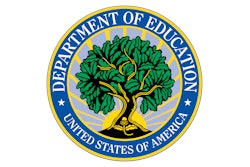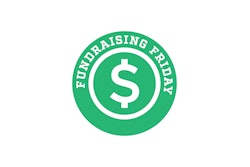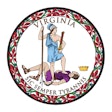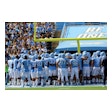Injured Hockey Player Targets League and Assailant
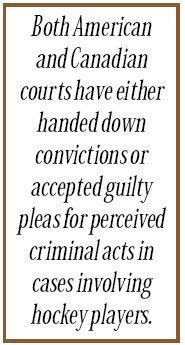
Athletic administrators in Illinois couldn't help but experience a sickening sense of déjà vu when Marty McSorley clubbed Donald Brashear to the ice with 2.7 seconds remaining in an NHL contest in February. McSorley's actions and the subsequent criminal investigation (Vancouver police are prosecuting McSorley on charges of assault with a weapon) was eerily similar to a case that occurred last November at the high school level.
Fifteen-year-old Neal Goss was captain of the New Trier High School club ice hockey team - a team that, while it uses the school's name and is made up of school players, is sanctioned not by the school but by the Amateur Hockey Association of Illinois. On Nov. 3, Goss was on the ice as a particularly intense game against rival Glenbrook North High School came to an end with Goss's team on the winning end of a 7-4 score. Goss, who had scored three goals in the game, was skating to his team's bench just after the final buzzer sounded, when he was viciously crosschecked from behind by a 15-year-old opponent. Goss was sent headfirst into the boards and sustained serious and permanent injuries; he has been left paralyzed from the chest down with a spinal cord injury.
The assailant, meanwhile, was criminally charged with aggravated battery. Prosecutors have indicated that the timing of the attack (after the final buzzer) was a factor in determining whether or not to charge the assailant, as was the severity of Goss's injuries. At the center of the decision to prosecute is doubtless the notion that the assailant's actions were outside the scope of the game.
Criminal cases such as this are not all that rare. For example, both American and Canadian courts have either handed down convictions or accepted guilty pleas for perceived criminal acts in cases involving hockey players. Recently, Ontario league player Jesse Boulerice pleaded guilty to an aggravated assault charge (he was sentenced to probation) after he intentionally swung his stick and struck an opposing player in the face. What is intriguing from a legal standpoint is that Goss's attacker is a minor. Few cases have dealt with criminal charges against minors.
The assailant was also named as a defendant in a civil lawsuit filed by Goss on Dec. 8 that, in addition, names the league that sponsored the game, the association that governed the officials refereeing it, and the opposing team's coach. According to Goss v. Illinois Hockey Officials Association, et al. (Illinois Circuit Court Docket No. 99LJ3866), during the game the opposing team's coach "persistently and regularly heckled and ridiculed" Goss and also "rallied his players to take special action" against him.
Goss's claim against the assailant and his coach are the most obvious - Goss alleges that the assailant acted outside the scope of the sport and that he acted negligently, and that the coach's incitement precipitated Goss's injuries. As for the referees and their governing association, Goss alleges that during the game he complained to the officials about the abuse he was receiving "in the form of illegal hits and abusive language," and that the officials ignored his complaints. By doing so, Goss claims the the officials permitted an "atmosphere of improper intensity to build up" that eventually resulted in his injuries. Finally, Goss's lawsuit claims that the league negligently hired the officials and both failed to adequately warn them about the anticipated intensity of the game, and failed to factor in the officiating crew's inexperience or inability to deal with the heated contest.
The Goss case promises to re-ignite intense debate over the civil limits of legal accountability for the actions of participants and non-participants in sporting events. What is especially interesting about Goss is that it addresses many theories of liability against nearly every party who could conceivably be responsible for injuries sustained in most sporting events - an opposing player and his coach, the sports league sponsoring the game and the referees officiating it.
As a starting point, it is nearly universally recognized that in sporting events, ordinary negligence isn't enough to impose liability in player-vs.-player incidents. Instead, recklessness - which is a step higher than negligence, implying willfully irresponsible behavior - must be shown. Perhaps the most celebrated case supporting this proposition is Hackbart v. Cincinnati Bengals Inc. [435 F. Supp. 352 (D.C. Colo. 1977), rev'd, 601 F.2d 516 (6th Cir. 1979)]. In that case, Cincinnati Bengals player Booby Clark elbowed an opposing player in the head behind the play after an interception by the opposing team. Subsequently, it was learned that Clark had fractured the player's neck. The player sued Clark but lost at trial when the court held that tort liability did not belong in professional sports. On appeal, the trial court's ruling was reversed. The appeals court instead held that liability could exist, but that recklessness was the appropriate standard.
Since Hackbart, nearly every jurisdiction has followed the rule that a finding of recklessness can result in liability on the part of a sports participant who injures a fellow participant. In Goss, it appears likely that the cause of action against the assailant will be successful.
In terms of the liability of the coach and referees (who were not named individually but rather as agents of their supervising association), if Goss's allegations prove true, these defendants would appear to be exposed to some form of liability. For both defendants, their liability will depend to some extent on the evidence presented in light of an Illinois law that only renders coaches and referees liable if their conduct "falls substantially below the standards generally practiced and accepted in like circumstances by similar persons rendering such services." In such a case, the court (or jury) will ask whether the actions of the coach and referees fell substantially below generally accepted standards.
While this argument has been used in a number of prior cases involving coaches, proving that coaches engaged in this sort of conduct is difficult at best. To cite one example, in Nydegger v. Don Bosco Preparatory High School [495 A.2d 485 (N.J. Super. Ct. Law Div. 1985)], a high school soccer player sustained injuries when he was "undercut" by a rival player. The injured player sued, among others, the opposing team's coach, alleging that he taught players to compete in an "aggressive" and "intense" manner while stressing that "winning the game is all-important." However, the court dismissed the case against the coach, finding that there was no evidence that the coach had instructed his players to commit illegal acts or had otherwise taught players techniques "that would increase the risk of harm to opposing players."
Finally, as it pertains to the league, it is unclear whether or not the league is entitled to any immunity as a governmental agency (legally, this is often termed as "sovereign immunity"). However, even assuming that it is not entitled to immunity, establishing the league's liability might be difficult. By way of analogy, a recent California appeals court ruled in Ochoa v. California State University, Sacramento [85 Cal. Rptr.2d 768 (Ct. App. 1999)] that a university owed no duty to an injured intramural soccer player who was punched in the jaw during a game. The court found (notwithstanding any immunity defense) that no "special relationship" existed between the university and the injured player. The court found that placing a responsibility on the school in such a case would not only be "extraordinary," but might also mean the end of intramural sports at the university. The court was obviously looking for a more definite connection between the plaintiff and the university than mere sponsorship.
That may well be the case in Goss as well. For Goss to impose liability upon the league, his attorneys will probably have to show notice or knowledge of the potential harm or its likelihood on the part of the league, and that it failed to take action despite this knowledge or awareness.
The issues raised in Goss are an unfortunate reality in today's sporting world, both amateur and professional. Although sports have long been recognized to be potentially violent affairs in which injuries are common, public reaction to Goss's injury and subsequent lawsuit suggests that athletes and spectators are becoming less tolerant of violence perpetrated under the guise of "sport."
Goss has also left many in the amateur sports field wondering what effect the outcome of this case will have in the event a conviction is rendered or a substantial verdict is awarded. Criminally, even a guilty plea has the potential to "chill" amateur athletics, something that the courts have repeatedly said they do not want to do. Goss's civil case at the very least has the potential to further delineate for participants and administrators what behavior is held by the courts to be within the scope of the game.















